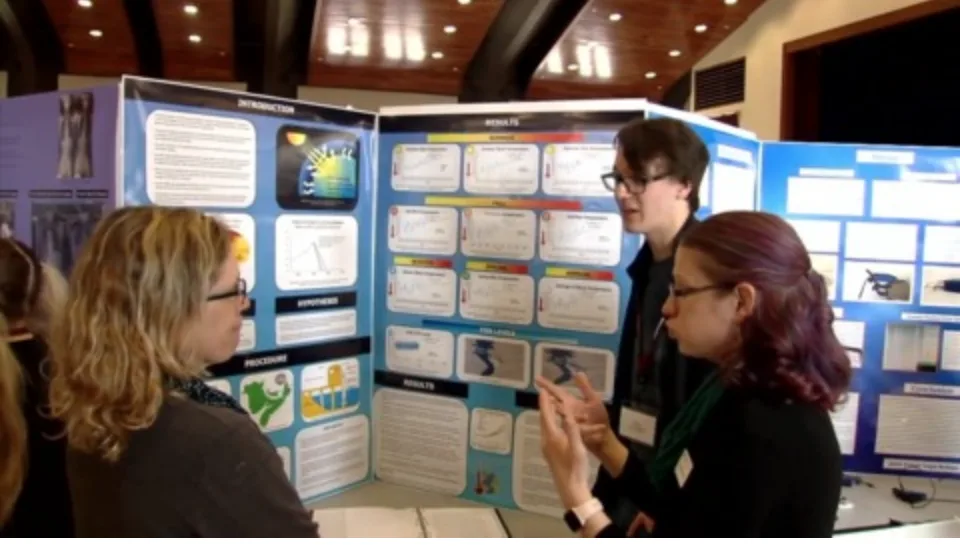
My 'sobering' experience at the science fair in Halifax
Covering the the provincial science fair in Halifax becomes an eye-opening experience for Weather Network reporter, Nathan Coleman. Here's his story.
I produced some famous science fair experiments as a kid growing up in the ’90s. One involved a taste test. There were three bowls of potato chips, all different flavours, and I polled who could guess them correctly. It may have been the most popular booth at the fair.
That was during elementary school. As I got older, the science got more complex, but I always found a way to have fun with it.
Fast forward to 2019. I’m a reporter covering this year’s provincial science fair in Halifax. The word I’d use to describe it: sobering.
RELATED: Atlantic species are moving north due to climate change
First up, I met Sophia Green, a grade nine student from Bible Hill Junior High. Her laminate placard jumped out at me: "Marine Life Murder! A study of Ocean Acidification."
She tells me her grandfather, like mine, had been a lobster fisherman for over 50 years.
“He was talking to me about how he noticed a drastic change in the lobster shells from the start of his career to the end,” she says. Her experiment would test how ocean acidification impacts mussel shells.
Now, I’m no stranger to ocean acidification. I’ve put together several video reports on the subject. For some reason, the issue doesn’t get much attention. Maybe it’s all the talk about Ph levels and the fact that the change happens slowly, but to me, the whole concept is terrifying.
You hear a lot about C02 rising up and causing problems in the atmosphere, but little on how it also gets absorbed right into the world’s oceans.
For Sophia’s experiment, her control group was a jar of shells in seawater with a Ph of 8.1, the current Ph of the ocean, she tells me.
“In the experimental group, I changed the Ph with vinegar as our acidic base to a Ph of 7.5, which is the projected Ph in 2100.”
The Three jars of shells in that group lost 5 percent of their weight over time, with one jar losing 10 percent.
“Growing acidity in our ocean is drastically affecting our marine life so we need to do something about it now before it’s too late,” she says.
I’ve heard this kind of warning coming from a scientist visiting Halifax from the Woods Hole Oceanographic Institution. To hear it from Sophia Green was sobering.
I thanked her for the interview and moved over to the next aisle where I found grade 12 student Logan Collins. He came all the way from Riverview High School in Sydney, Nova Scotia.
Logan tells me his project used data analysis as a way to help convince people in Sydney that climate change is real.
“People within my community of Cape Breton don’t seem concerned about climate change and don’t think that it has or will impact them,” he says with genuine concern.
With half a century’s worth of Environment Canada archival data, he modelled and predicted what temperature and tide data would be for the next 50 years in Sydney. Pointing at a mock-up of his hometown underwater, he says “In here is actually where I work. In that one-kilometre square, there [are] $25.7 million dollars of infrastructure that would be underwater in 50 years. So that’s the Sobeys where I work.”
Logan projected a future increase of average temperatures in Sydney of 3 degrees Celsius, above pre-industrial levels.
I ask him how he was able to get so good with data analysis. “YouTube was really helpful,” he says.
Follow Nathan Coleman on Twitter, @NateTWN












